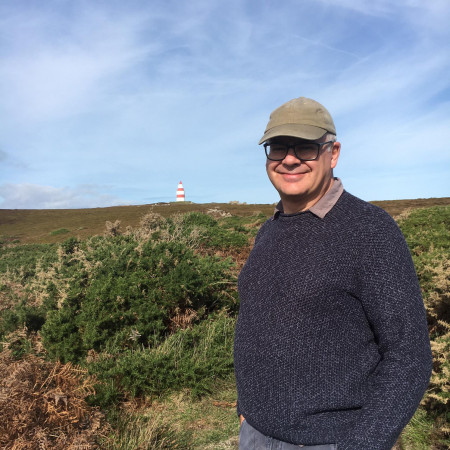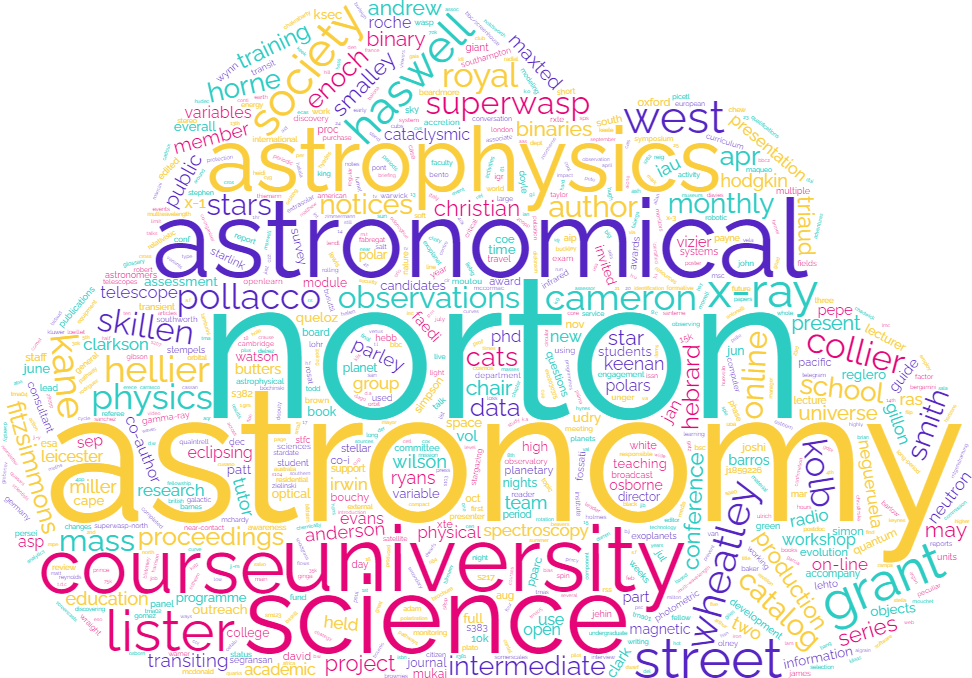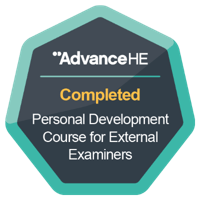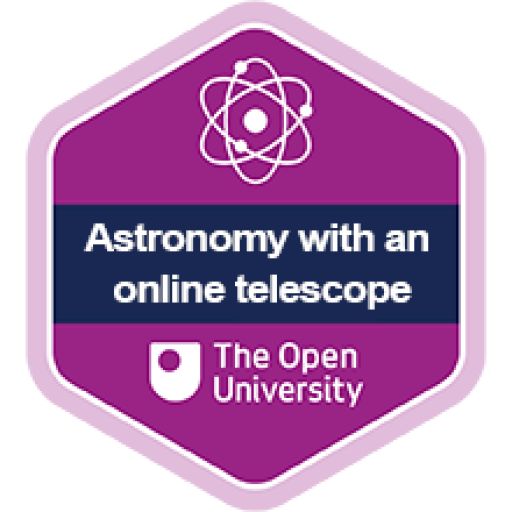
Prof Andrew Norton
Professor of Astrophysics Education
Biography
Professional biography
B.Sc. (Hons) "Physics with Astrophysics" 1st class, Leicester University (1985)
Ph.D. "Galactic X-ray Astronomy with EXOSAT" Leicester University (1988)
PhD Supervisors: Mike Watson & Bob Warwick; Examiners: Ken Pounds & Keith Mason
Roles:
Professor of Astrophysics Education, School of Physical Sciences, OU (2013 - 2025)
Senior Lecturer in Astrophysics, Dept. of Physics and Astronomy, OU (1999 - 2013)
Lecturer in Astrophysics, Department of Physics, OU (1992 - 1999)
Research Fellow, Dept. of Physics and Astronomy, U. Southampton (1988 - 1992)
Other Open University roles:
Undergraduate Qualification Lead for Physics, Astronomy & Planetary Science (2022 - 2025)
STEM Media Fellow (2023 - 2025)
External Examiner Training Facilitator (2024 - 2025)
Deputy Head of School (internal affairs) (2019 - 2023);
SPS Postgraduate Tutor (recruitment) (2017 - 2019);
SEPNet Academic Outreach Officer and Coordinator (2013 - 2015);
Assoc. Prog. Director for Physics and Astronomy & Planetary Science (2008 - 2014);
Departmental Director of External Relations (2003 - 2006);
Curriculum Director for Astronomy and Planetary Science (1999 - 2003);
Director of Research for Department of Physics and Astronomy (1998 - 2001).
I previously served:
as Editor-in-Chief of the journal Astronomical Review, (2015 - 2018),
on the STFC Advisory Panel for Public Engagement (2015 - 2018),
as Director of the OU's George Abell Observatory (1998 - 2025).
Professional memberships:
Fellow of the Royal Astronomical Society.
Vice President (2013 - 2015); Council Member (2010 - 2013);
Membership Committee (2010 - 2013); Diversity Committee (2013 - 2016)
Education & Outreach Committee (2013 - 2015); Ballot scrutineer (2017 - 2020)
Fellow of the Institute of Physics
Senior Fellow of the Higher Education Academy. (AdvanceHE)
Member of the International Astronomical Union
Division C - Education, Outreach and Heritage: Commission C2:
Communicating Astronomy with the Public;
Division F - Planetary Systems and Bioastronomy: Commission F2:
Exoplanets and the Solar System;
Division G - Stars and Stellar Physics: Commission G1:
Binary and Multiple Star Systems.
STEMNET Ambassador and Public Engagement Ambassador
for the National Co-ordinating Centre for Public Engagement
Awards:
Research: The Royal Astronomical Society Group Achievement Award (2010) as part of the SuperWASP consortium.
Teaching: The Royal Astronomical Society Higher Education Award (2025) for designing, writing and delivering the Open University’s Astronomy curriculum over the last 25 years, reaching tens of thousands of distance learning students
An Open University Team Award (2016) for the production and first presentation of S217 Physics: from classical to quantum.
An Open University Teaching Award (2010) for "Outstanding contributions to the teaching of astronomy and astrophysics, particularly through the use of innovative materials and methods."
Public Engagement: A SEPnet Public Engagement Award (2015), "Highly Commended" in the Achievement category, for my extensive body of public engagement.
Wordle cloud of my CV:

A complete bibliography of all my published work is available, containing links to downloadable PDF files. As well as refereed journal articles and conference papers, this list also includes text books, videos, TV programmes, software packages, experiment designs and printed or online outreach articles that I have produced. A set of citation statistics is also available.
A public talk I gave as part of the OU@50 clebrations on The Clockwork Universe is available on the School of Physical Sciences' YouTube channel.
Research interests
- My bibliography includes 125 refereed journal papers (around 250 research publications in total) which have accumulated around 8000 citations. I am Senior Author for over 55 of the refereed journal papers (i.e. the lead author was either myself or a postgrad/postdoc for whom I was principal supervisor). I have an h-index of 44. See my publications on ADS.
My Research interests include:
- General time domain astrophysics, focussing on stellar multiplicity and variability from wide field surveys for transiting exoplanets, especially SuperWASP. Also citizen science applications in this area, where I lead the Zooniverse Variable Stars project and VeSPA (Variable Star Photometry Archive).
- Observations and modeling of Magnetic Cataclysmic Variables, in particular X-ray & polarimetric observations of Intermediate Polars and modelling of their accretion flows.
- Observations and modeling of High Mass X-ray Binaries, in particular infrared radial velocity studies of eclipsing systems to determine masses of neutron stars and black holes.
I was co-Chair of the 2004 RAS National Astronomy Meeting held at the OU.
I am a founder member of the SuperWASP project and a founder member of the UK consortium which is a shareholder in the Southern African Large Telescope. I was the founder and editor of the international Exoplanet Newsletter for its first 100 editions.
Postgraduate students (with their completion date & thesis titles) for whom I am lead (or co-lead) supervisor:
- Adam McMaster* (2025) "Citizen science and stellar variability in the SuperWASP all sky survey"
- Heidi Thiemann (2021) "Variable stars in the SuperWASP all sky survey"
- Joseph Cooper (2020) "Planet compositions from disintegrating exoplanets"
- Paul Greer§ (2017) "Characterisation of the Blazhko effect in RR Lyrae stars using SuperWASP data"
- Marcus Lohr* (2014) "Varying periods in variable stars with SuperWASP"
- Andy Mason* (2012) "Red eyes on high mass X-ray binaries: donor evolution & neutron star masses"
- Stan Payne (2012) "The Identification and classification of variability in stellar sources observed with SuperWASP"
- Olly Butters (2009) "Unveiling the nature of Intermediate Polars through multiwavelength observations and computer modeling"
- Les Thomas (2008) "Optical and infrared observations of cataclysmic variable stars''
- Amira Val Baker (2007) "High Mass X-ray Binaries: the donor Stars and their compact companions"
- Tracey Parker (2006) "Accretion characteristics in Intermediate Polars''
- Bob Somerscales (unfinished) "Modelling the accretion process in intermediate polars"
- Diana Maxwell (2001) "Identification of High Mass X-ray Binaries''
- Tim Ash (1999) "The masses of the neutron stars in Cen X-3 and Vela X-1''
- Pete Taylor* (1997) "Modelling the Accretion Process in Intermediate Polars''
* Winner of the AOUG Sir John Horlock Award for Science
§ Winner of the AOUG Will Swann Award for Innovation and Knowledge Development
I have been second or third supervisor for a further 22 OU PhD/MPhil students (Stephen Mills, David Arnot, Zachary Amato, Joe Reale, Oleg Kozhura, Helen Usher, Mark Salisbury, Meredith Morrell, Pam Rowden, Calum McCune, Enda Farrell, Robert Farmer, Karl Wraight, Jon Dawson, Fraser Lewis, Vanessa Stround, Philip Davis, Ben Eves, Craig Powell, Rob Mundin, John Barker & Dave Lott) and acting supervisor for 2 OU PhD students (Becky Enoch & Amanda Smith) during maternity leave cover.
I have served as PhD/MPhil/MSc examiner for 18 OU students and 33 external students at institutions including: Durham University, Keele University, Leicester University, Liverpool John Moores University, Oxford University, Queens University Belfast, Southampton University, University of Central Lancashire, University College London, University of Hertfordshire, Warwick University, the University of Cape Town and Alicante University. In addition I have been PhD viva chair for a further 21 OU students.
Teaching interests
I was the Undergraduate Qualification Lead for Physics and Astronomy & Planetary Science. from 2022 to 2025. Previously, from 2008 until 2014 I was Associate Programme Director for Physics and Astronomy & Planetary Science, overseeing the content and presentation of the Physical Science curriculum at the OU. I developed the Physics and Astronomy & Planetary Science pathways through the OU's BSc (Hons) Natural Sciences degree and led the process by which the Institute of Physics accredited a route through our qualifications suitable for students wishing to obtain Chartered Physicist status.
Here's a 2 minute video I made on "Why study physics?"
My teaching interests have recently focused on:
- Chairing the kick-off production of the Level 3 module, S384 Astrophysics of stars and exoplanets, and writing the "Stellar Astrophysics" material for first presentation in 2023.
- Contributing to the Level 2 module, S284 Astronomy, where I wrote Topic 1 "Cosmic length scales" about astrometry and photometry, and Topic 6 "The extreme Universe" about active galaxies, compact binary stars and double degenerate objects, as well as designing the online multi-variant exam questions.
- Chairing the production and presentation of the Level 1 physics and astronomy module: SM123 Physics and Space which is the first subject-specific core module for students following physics or astronomy & planetary science pathways through an OU degree.
- Writing two projects about variable stars for the Stage 4 module, S(XS)841 Masters project in Physical Sciences.
- Writing a Gaia case study as part of the production team & presentation team for S818 Space Science which forms the first module of the MSc in Space Science and Technology.
In the past I have been involved with:
- Chairing the production and first presentation of the core Level 2 physics module: S217 Physics: from Classical to Quantum
- Writing and presenting the ARROW radio telescope activity for the module: SXPA288 Practical physics and astronomy
- Chairing the presentation team for the core Level 2 physics module: S207 The Physical World
- Acting as Course Director or Tutor at the residential Schools: SXR207 Physics by Experiment, SXR208 Observing the Universe, and SXR103 Practicing Science.
- Chairing the production and presentation teams for both S382 Astrophysics & S383 The Relativistic Universe
- Working as part of the production team for the Level 1 module S104 Exploring Science, where my book, entitled "Quarks to Quasars", covers the physics of the very small and the very large - from particle physics to cosmology.
- Developing the Astronomy and Planetary Science Practical module, SXR208 Observing the Universe, which ran at the Observatori Astronomic de Mallorca from 2004 - 2011.
- Earlier modules: S197 How the Universe Works (production & presentation chair); S381 The Energetic Universe (production chair); S207 The Physical World (Book 6 production chair); S103 Discovering Science (Books 7 & 11 production chair); ST291 Images and Information (presentation chair)
I was External Examiner for the distance learning Astronomy MSc programme at Liverpool John Moores University from 2018 - 2021. I previously served as External Examiner for the School of Physics and Astronomy at Manchester University from 2008 - 2011 and External Examiner for the School of Physics and Astronomy at Southampton University from 2012 - 2017. I have also acted as External Assessor for the Physics with Astrophysics degree at Warwick University (2018); External Reviewer for material produced by Oxford University Department of Continuing Education (2011); carried out External Validation of the Observational Astronomy degree at the University of South Wales (2014), and was External Advisor on the approval panel for the “Gateway to Science” programme at Cornwall College for the provision approved by Plymouth University (2016).
I was one of two External Examiner Training Facilitators for the OU, having completed the Advance HE External Examiner Personal Development Course.






Impact and engagement
As STEM Media Fellow, I liased between the three science schools of the STEM Faculty (i.e. LHCS, EEES and SPS) and the OU Broadcasts & Partnerships Office for BBC commissions, as well as with OpenLearn for free courses, videos and articles. In this role I have supported the following recent and forthcoming TV & Radio broadcast projects: Spring Watch (2023, 2024, 2025), Wild Isles (2023, 2025), Earth (2023), Inside Science (2023, 2024, 2025), Planet Earth 3 (2023), Rare Earth (2024, 2025), Secrets of the Brain (2025), Disease X (2025), Once upon a time in Space (2026), Secret Garden (2026), Forensics - the Real CSI (2024, 2025), Evolution (2026), Blue Planet 3 (2026), Wilderness (2026), Hidden Planet (2027), and Green Planet 2 (2028). I have helped produce BBC Ideas films on How to solve the Plastic problem (2024) and How the quantum revolution will change our lives (2024), as well as their related OUConnect infographics Different types of Plastics (2024) and Quantum Computing: A New Era of Possibilities (2024). I have also led development of various OpenLearn content, including: Sustainability Hub v2 (2024); S111 Questions in Science videos (2024); and new courses based on extracts from S284 Images of the Universe, SM380 Quantum computing, SM381 Coulomb's law, S384 The Formation of Exoplanets & White dwarfs and Neutron stars, and S385 Unsolved Problems in Cosmology.
I have written a popular science book "Understanding the Universe: the Physics of the Cosmos from Quasars to Quarks" which is published by CRC Press (Taylor & Francis Group). The book explores how all areas of physics, from the very smallest scales to the very largest, come together to form our current understanding of the Universe. It takes readers on a fascinating journey, from the Big Bang and how the Universe has evolved, to how it appears now, and the possibilities for how it will continue to evolve in the future. It also explores the latest exciting developments in the area and how they impact our understanding of the Universe, such as quantum chromodynamics, black holes, dark energy, and gravitational waves. Equally importantly, it explains how we have come to know all of this about the Universe and details the limitations of our current understanding. This book is accessible to all introductory undergraduate students interested in the physical sciences. It prioritises a non-mathematical approach so it can be understood by all students, with only two algebraic equations in the book and any numerical calculations shown are limited to simple arithmetic.
I was deputy organiser of the exhibit "Is there anybody out there? Looking for new worlds" at the 2008 Royal Society Summer Science Exhibition, led by Carole Haswell.
I have worked with Katarzyna Krzyzanowska and Silvia Bergamini to produce two board games based around quantum technologies entitled "Lab-Labyrinth" and "Quantum Enigma". For the latter game - see this promotional video and this video illustrating the gameplay.
Here are some cartoons I made with Stephen Serjeant and Dave Rothery on "60 second Adventures in Astronomy". They were nominated for an Arthur Award in 2013 and won a prize at the 36th annual TELLY Awards in 2015; they have now received over 500,000 individual views. Here's a 10-minute lecture on "Exoplanets and how to find them" that I presented as part of the OU's schools' christmas lectures in 2013. In 2011 I wrote a children's story book about exoplanets: "Oogle Flip and the Planet Adventure" which was a finalist in the 2012 Golden Duck Awards for excellence in children's science fiction literature.
I am a frequent Academic Consultant for OU/BBC astronomy co-productions, recently including Universe presented by Brian Cox (2021). Related to this, I helped produce a video for BBC Ideas called "How big is our Universe?" which updates the famous "Powers of Ten" film made by the Eames Corporation in the 1970s, and produced an infographic on "5 big questions about the Universe" as well as an associated narrated commentary explaining the answers . In the past I have also worked on Stardate and The Cosmos: a Beginners Guide (both presented by Adam Hart Davies) as well as Bang Goes the Theory: the Drake Equation (presented by Dallas Campbell). I also supported the 2012 & 2013 series of StarGazing Live! (presented by Brian Cox & Dara O'Briain) and the programmes Light and Dark (presented by Jim Al Khalili).
My profile on OpenLearn includes many articles I've written including ones about the science of Dr. Who and Star Trek. I have also written several articles for The Conversation.
As part of the OU's outreach and public engagement activity aimed at widening participation in physics and astronomy amongst under-represented groups, I regularly present talks to schools and other youth groups, and to Astronomical societies, the U3A, the WI and other adult groups. I also give talks to other general audiences at science festivals and museums. If the audience meets the OU's criteria for widening participation, I am happy to give talks in "work time" on the basis of travel expenses alone; for other talks outside of OU business, please contact me about speaking fees. Currently I am able to offer the following presentations for general audiences:
- The life and death of stars: Suitable for family audiences and informal groups, this talks explains why "we are made of star stuff" illustrated with songs and samples of elements.
- Stellar multiplicity: Suitable for astronomical societies or technical audiences, this talk explores the way stars evolve and live their lives as part of hierarchical multiple system, with examples drawn from my research.
- Data mining the SuperWASP variable star zoo: Suitable for astronomical societies with more experienced members, or more technical audiences, this talk gives a taste of current research projects using an all-sky stellar photometry archive. (Lockdown lecture on YouTube)
- The history and future of X-ray astronomy: Suitable for astronomy societies, this talk presents a survey of the techniques and history of X-ray astronomy culminating in a look ahead to a planned X-ray astronomy mission for the next decade.
- Gaia: mapping the Galaxy: A multimedia-rich lecture suitable for ages 16+ or for astronomical societies about the recently launched ESA mission Gaia which will map a billion stars in the Galaxy over the next five years.
- Exoplanets and how to find them: A talk suitable for ages 16+ or for astronomical societies, or family audiences which explains how planets around other stars are detected and gives a brief summary of the recent discoveries in this area, including those from the SuperWASP project, of which I am part.
- Gamma-ray Bursts: an astronomical detective story: A highly illustrated talk suitable for ages 16+ or for astronomical societies, which describes how the mystery of the origin of gamma-ray bursts was solved. (Lockdown lecture on YouTube)
- The new cosmology: A highly illustrated talk suitable for ages 16+ or for astronomical societies, which describes the remarkable new theories concerning the origin and evolution of the Universe.
- Magnetic compact stars: Suitable for astronomical societies with more experienced members, or more technical audiences, this talk gives a taste of current research involving white dwarfs and neutron stars.
- Outbursts, Orbits and Oscillations: A highly illustrated talk suitable for ages 16+ or for astronomical societies, which explores the time domain astrophysics of compact accreting binary stars. (Lockdown lecture on YouTube)
International links
My background
Everyone has a different route to where they end up, and the great thing about the OU is that it offers education to everyone. Both my grandfathers were engine drivers and my parents both left school at age 14 or 15 with no qualifications. Tracing my family back through 10 generations to 1700, I get a long line of illiterate Lincolnshire farm labourers, so no great academic achievements there. I went to a village infant school with only a dozen pupils per year group and then a rural Lincolnshire comprehensive school, whose headmaster's specialist subject was woodwork. I did pretty well at school - I was the only person in my year of 240 kids to get 8 grade "A" at O-level, and was one of about 30 who stayed on for A-levels, where again I did ok. The school didn't have a great tradition of sending pupils to university, having been a so-called secondary modern school (i.e. non-grammar school) until a few years previously, and never sent anyone to Oxbridge until long after I left. I was the first in my family to go to university and ended up at Leicester University studying Physics with Astrophysics, which suited me very well, and finished as one of half-a-dozen students with a first class degree in my year group. So I stayed on there to do a PhD in X-ray Astronomy, as I didn't really have a better idea of what to do. Following that I did a postdoc research job for 4 years at Southampton University and then applied for a not very fashionable 3-year lectureship job at the OU where Jocelyn Bell Burnell was trying to expand the Physics Department to include some astronomers. Luckily my previous experience teaching adult education (night school) classes in my spare time at Southampton impressed the OU, and I've been here ever since, doing all the things listed above. I'm grateful to be part of the OU and able to help others along their own academic journeys.
My Erdös - Bacon - Sabbath number is 13.
Scientific papers: I have an Erdös number of no more than 4: I have co-authored with Lars Bildsten, who co-authored with George Djorgovski, who co-authored with Jogesh Babu, who co-authored with Paul Erdös.
Film or TV programmes: I have a Bacon number of no more than 4: I have appeared on screen (in "Stardate: Transit of Venus") with Adam Hart Davis, who has appeared (in "Stardate: Mysteries of Venus") with Myleene Klass, who has appeared (in "Monk Dawson") with Rhona Mitra, who has appeared (in "Hollow Man") with Kevin Bacon.
Musical performance: I have a (tenuous) Sabbath number of no more than 5: I played one note on my saxophone in an OU video "Seeing Inside the Sun" directed by Anne-Marie Gallen, who directed an OU programme "The Riddle of the Dome" narrated by Andrew Sachs, who was part of the cast recording of "Fawlty Towers" with John Cleese, who was in various "Monty Python" recordings with Eric Idle, who recorded the "Childrens Promise" charity album with Ozzy Osbourne, who of course was in Black Sabbath.
Academic Connections
See my Academic Family Tree - here's one lineage from it (research supervisors / advisors / mentors):
Me (1988, Leicester) ⇒
Mike Watson (1979, Leicester) ⇒
Ken Pounds (1961, UCL) ⇒
Sir Harrie Massey (1932, Cambridge) ⇒
Sir Ralph Fowler* (1913, Cambridge) ⇒
Lord Ernest Rutherford (1897, Cambridge) ⇒
Sir JJ Thomson (1880, Cambridge) ⇒
John Strutt, Lord Rayleigh (1865, Cambridge) ⇒
William Thomson, Lord Kelvin (1846, Cambridge) ⇒
William Hopkins (1830, Cambridge) ⇒
Adam Sedgwick (1811, Cambridge) ⇒
Thomas Jones (1782, Cambridge) ⇒
Thomas Postlethwaite (1753, Cambridge) ⇒
Stephen Whisson (1742, Cambridge) ⇒
Walter Taylor (1723, Cambridge) ⇒
Robert Smith (1714, Cambridge) ⇒
Roger Cotes (1706, Cambridge) ⇒
Sir Isaac Newton (1668, Cambridge).
*Nb. Fowler's formal advisor was not Rutherford (he was his father-in-law), but they worked closely together and Rutherford was a mentor to Fowler.
Also, Ralph Fowler was at the famous 1927 Solvay Conference (below, back row, second from the right). So I'm no more than 4 handshakes away from Albert Einstein, Maire Curie, Max Planck, Erwin Schrödinger, Werner Heisenberg, Wolfgang Pauli, Niels Bohr, Louis de Broglie, Paul Dirac, etc.

Projects
DTG 2014
DTG 2014
EU SPACE AWARENESS
EUSPACE-‐AWE will use the excitement of space to attract young people into science and technology and stimulate European and global citizenship. ur main goal is to increase the number of young people that choose space-‐related careers. We shall target diverse groups that are influential in the complex processes that lead to career decisions.
STFC Open 2018 DTP
STFC Open 2018 DTP
STFC DTG 2015 - 2016 (2015 Intake)
STFC DTG Quota 2015-16 AMS record for students starting on or after 01/10/2015
Ogden Science Officer / Citizen Science Research Fellow
The Ogden Trust is providing matched funding to a maximum of £75k for 3 years for an 0.5 FTE outreach post, that we can add to the ASTERICS post and can therefore recruit a full-time postdoctoral research assistant.
Astronomy and Planetary Sciences at the Open University
The aim of our programme in Astronomy & Planetary Science at the Open University (APSOU) is to carryout detailed investigations of the origin and evolution of galaxies, stars and planets with a special emphasis on our own Solar System through a combination of observation, simulation, laboratory analysis and theoretical modelling. Our research is divided into two broad areas, reflecting the historical research strengths. This research programme is well-matched to both nationally- and internationally-agreed research imperatives. In its final report, A Science Vision for European Astronomy2, Astronet’s Science Working Group identified four broad areas of strategic importance; our research covers major topics within each of these areas. APSOU projects also map onto two of the four Science Challenges that form STFC’s Road Map3 for science (‘How did the universe begin and how is it evolving?’ and ‘How do stars and planetary systems develop and is life unique to our planet?’). The present APSOU programme comprises 20 projects (labelled A to T), of which 6 are for consideration by the Astronomy Observation (AO) panel, 1 for Astronomy Theory (AT), and 13 for the Planetary Studies (PL) panel. The AO projects cover the breadth of the 7 themes recognised as UK strengths in the report of STFC’s Astronomy Advisory Panel (AAP), whilst the 13 PL projects are directed towards answering questions raised in two of the three themes identified as UK strengths in the roadmap of STFC’s Solar System Advisory Panel (SSAP)4.
Publications
Book
Book Chapter
Using a virtual world for teaching the motion of projectiles (2011)
Transit timing variations and orbital dynamics (2010)
Digital Artefact
A search for the optical counterpart of SAX J1805.5-2031 (2002)
Journal Article
VeSPA: The SuperWASP Variable Star Photometry Archive (2021)
SuperWASP Variable Stars: Classifying Light Curves Using Citizen Science (2021)
Monitoring of transiting exoplanets and their host stars with small aperture telescopes (2021)
Gaia18aen: First symbiotic star discovered by Gaia (2020)
Dispersed Matter Planet Project discoveries of ablating planets orbiting nearby bright stars (2020)
The stellar rotation–activity relation for a sample of SuperWASP and ASAS-SN field stars (2020)
A Zooniverse Project to Classify Periodic Variable Stars from SuperWASP (2018)
The SuperWASP catalogue of 4963 RR Lyr stars: identification of 983 Blazhko candidates (2017)
WASP-86b and WASP-102b: super-dense versus bloated planets (2016)
The doubly eclipsing quintuple low-mass star system 1SWASP J093010.78+533859.5 (2015)
Eclipsing Am binary systems in the SuperWASP survey (2014)
High-frequency A-type pulsators discovered using SuperWASP (2014)
Parameters of two low-mass contact eclipsing binaries near the short-period limit (2014)
Astrophysical parameters of the peculiar X-ray transient IGR J11215−5952 (2014)
Discovery of WASP-65b and WASP-75b: two hot Jupiters without highly inflated radii (2013)
WASP-54b, WASP-56b, and WASP-57b: three new sub-Jupiter mass planets from SuperWASP (2013)
The true stellar parameters of the Kepler target list (2013)
Bright low mass eclipsing binary candidates observed by STEREO (2012)
Transit algorithm performance using real WASP data (2012)
STEREO observations of long period variables (2012)
Period decrease in three SuperWASP eclipsing binary candidates near the short-period limit (2012)
SuperWASP observations of pulsating Am stars (2011)
STEREO observations of stars and the search for exoplanets (2011)
The masses of the neutron and donor star in the high-mass X-ray binary IGR J18027-2016 (2011)
WASP-39b: a highly inflated Saturn-mass planet orbiting a late G-type star (2011)
Stellar rotation in the Hyades and Praesepe: gyrochronology and braking time-scale (2011)
Stellar rotation in the Hyades and Praesepe: gyrochronology and braking timescale (2011)
Independent discovery of the transiting exoplanet HAT-P-14b (2011)
Short period eclipsing binary candidates identified using SuperWASP (2011)
RXTE and XMM observations of intermediate polar candidates (2011)
WASP-37b: A 1.8 M J exoplanet transiting a metal-poor star (2011)
WASP-38b: a transiting exoplanet in an eccentric, 6.87d period orbit (2011)
High mass X-ray binaries in the NIRorbital solutions of two highly obscured systems (2011)
WASP-24 b: a new transiting close-in hot Jupiter orbiting a late F-star (2010)
SuperWASP observations of long timescale photometric variations in cataclysmic variables (2010)
The eclipsing, double-lined Of supergiant binary Cyg OB2-B17 (2010)
Hard X-ray properties of magnetic cataclysmic variables (2010)
Polarized QPOs from the INTEGRAL polar IGRJ14536-5522 (=Swift J1453.4-5524) (2010)
The 0.5 MJ transiting exoplanet WASP-13b (2009)
WASP-12b: the hottest transiting extrasolar planet yet discovered (2009)
WASP-14b: 7.3 MJ transiting planet in an eccentric orbit (2009)
The main-sequence rotation-colour relation in the Coma Berenices open cluster (2009)
WASP-16b: A new Jupiter-like planet transiting a southern solar analog (2009)
RXTE confirmation of the intermediate polar status of IGR J15094–6649 (2009)
WASP-10b: a 3MJ, gas-giant planet transiting a late-type K star (2009)
WASP-7: A bright transiting-exoplanet system in the Southern Hemisphere (2009)
The defining characteristics of intermediate polars – the case of three-candidate systems (2008)
The decline in irradiation from the white dwarf in old novae (2008)
WASP-3b: a strongly irradiated transiting gas-giant planet (2008)
SuperWASP-N extrasolar planet candidates from fields 06h < RA < 16h (2008)
The accretion flows and evolution of magnetic cataclysmic variables (2008)
Discovery of polarised emission from the long period intermediate polar RX J2133.7+5107 (2007)
RXTE confirmation of the intermediate polar status of Swift J0732.5-1331 (2007)
SuperWASP-North extrasolar planet candidates between 3h < RA < 6h (2007)
A precessing accretion disc in the intermediate polar XY Arietis? (2007)
SuperWASP-North extrasolar planet candidates: candidates from fields 17 h < RA < 18 h (2007)
SuperWASP-N extrasolar planet candidates between 18h < RA < 21h (2007)
New periodic variable stars coincident with ROSAT sources discovered using SuperWASP (2007)
WASP-1b and WASP-2b: two new transiting exoplanets detected with SuperWASP and SOPHIE (2007)
The impact of correlated noise on SuperWASP detection rates for transiting extrasolar planets (2006)
A fast hybrid algorithm for exoplanetary transit searches (2006)
The SuperWASP wide-field exoplanetary transit survey: candidates from fields 23 h < RA < 03 h (2006)
The WASP Project and the SuperWASP Cameras (2006)
SuperWASP observations of the transiting extrasolar planet XO-1b (2006)
The WASP project in the era of robotic telescope networks (2006)
The WASP Project and SuperWASP Camera (2006)
Looking towards the detection of exoearths with SuperWASP (2006)
The periods of the intermediate polar RX J0153.3+7446 (2006)
Serendipitous asteroid lightcurve survey using SuperWASP (2005)
The mass of the neutron star in SMC X-1 (2005)
X-ray orbital modulations in intermediate polars (2005)
The 2004 transit of Venus observed from the Open University observatory (2005)
The spin periods and magnetic moments of white dwarfs in magnetic cataclysmic variables (2004)
Status of SuperWASP I (La Palma) (2004)
The 2004 RAS national astronomy meeting (2004)
The Be/X-ray transient KS 1947+300 (2003)
Pulsations and orbital modulation of the intermediate polar 1WGA J1958.2+3232 (2002)
Summary of the RAS discussion meeting on microquasars (2001)
VHE gamma rays from binary systems (2001)
Intermediate polar spin pulse profiles (2001)
The nature of TW Pictoris (2000)
YY Draconis and V709 Cassiopeiae: two intermediate polars with weak magnetic fields (1999)
The mass of the neutron star in Centaurus X-3 (1999)
The changing X-ray light curves of the intermediate polar FO Aquarii (1998)
GINGA and ROSAT observations of AO PSC and V1223 SGR (1997)
Stream-fed and disc-fed accretion in TX Columbae (1997)
Observations of the recent disc loss in X Persei: photometry and polarimetry (1997)
On the interpretation of intermediate polar X-ray power spectra (1996)
Multiwavelength observations of the Be star/X-ray binary EXO2030+375 during outburst (1994)
ROSAT observations of a soft X-ray emission component in the intermediate polar RE 0751+14 (1994)
Simulation of the X-ray light curves of intermediate polars (1993)
Other
VeSPA: The SuperWASP Variable Star Photometry Archive (2021)
Reports from the πCETL Teaching Resources & Activities Action Group (2010)
Multiwavelength observations of XTE J1859+226 on 1999, November 6th (1999)
Presentation / Conference
Follow Up of Transiting Hot Jupiters with the OpenScience Observatories (2020)
The LOFT mission concept: a status update (2016)
The Large Observatory for x-ray timing (2014)
LOFT: the Large Observatory for X-ray Timing (2012)
Time-domain astrophysics with SuperWASP (2012)
Stellar rotation in the Hyades and Praesepe: gyrochronology and braking timescale (2011)
First science results from the High Speed SAAO Photo-polarimeter (2011)
Polarization in soft x-ray intermediate polars (2010)
HD306414: optical counterpart to the peculiar X-ray transient IGR J11215-5952 (2010)
HD 306414, the optical counterpart to the Peculiar X-Ray Transient IGR J11215-5952 (2010)
Hard X-ray properties of magnetic cataclysmic variables (2010)
A new two channel high-speed photo-polarimeter (HIPPO) for the SAAO (2008)
Are the INTEGRAL Intermediate Polars Different? (2008)
SuperWASP Lightcurves of Subdwarf Stars (2008)
Monitoring variable white dwarfs with WASP (2007)
The color of noise in SuperWASP data and the implications for finding extrasolar planets (2007)
The mass of the black hole in LMC X-3 (2007)
Magnetic Cataclysmic Variable Accretion Flows (2007)
Current status of the SuperWASP project (2005)
Variables in the Pleiades and Hyades from SuperWASP-I commissioning data (2005)
Accretion flows in magnetic cataclysmic variables (2004)
The spin periods of magnetic cataclysmic variables (2004)
Neutron star masses in X-ray binaries (2003)
SuperWASP: wide angle search for planets (2003)
UBV RI pulsations and orbital modulation of the intermediate polar 1WGA J1958.2+3232 (2002)
On the spin periods of the magnetic cataclysmic variables (2002)
OAO1657-415: A `missing link' in high-mass X-ray binaries? (2001)
The nature of TW Pictoris (2000)
YY Draconis and V709 Cassiopeiae: two intermediate polars with weak magnetic fields (2000)
Radio Observations of the Bowshock around the Runaway System VELA X-1 (1998)
Five X-ray observations of the intermediate polar FO Aqr spanning ten years (1996)
Intermediate polar X-ray power spectra (1996)
Ginga and ROSAT observations of AO Psc and V1223 Sgr (1996)
Ten years of intermediate polar X-ray lightcurve interpretation (1995)
Modelling the accretion process in intermediate polars (1995)
OSSE observations of intermediate polars (1995)
Photometric and Hα observations of LS +61°303 (1994)
Multiwavelength observations of the Be-star / X-ray binary EXO2030+375 during outburst (1994)
Infrared spectroscopy of Be/X-ray binaries (1994)
Long term multiwavelength monitoring of high mass X-ray binaries (1994)